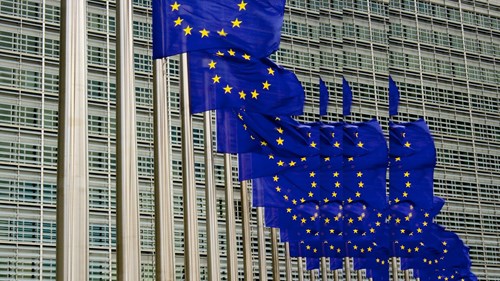Electronic signatures in transactions
In times of advancing globalisation and new technologies allowing large amounts of data to be exchanged in encrypted form in fractions of a second, traditional written form, i.e. only concluding contracts when the parties or their representatives are simultaneously present or by exchanging manually signed documents through the post, seems somewhat outdated. The call for digital solutions has become even louder in the wake of the coronavirus pandemic, and there is hardly a transaction where someone does not ask whether documents can also be signed electronically (for example using Adobe Sign or DocuSign).
Against this background, we take a closer look at the possibilities for using electronic signatures below.
Types of electronic signature
There are three different types of electronic signature which originate from the definitions contained in the European eIDAS Regulation:
I. Simple electronic signatures
The term “simple electronic signature” is not mentioned in the eIDAS Regulation, but is instead inferred. It is commonly understood as covering any electronic signature not corresponding to the advanced or qualified signature levels. “Electronic signature” means data in electronic form which is attached to or logically associated with other data in electronic form and which is used by the signatory to sign.
A simple electronic signature includes, for example, a scanned signature, a signature created on a touch screen or an e-mail in which the sender makes it clear that the e-mail is being sent in his or her name.
II. Advanced electronic signatures
By contrast, an advanced electronic signature has to meet the following cumulative requirements:
- it is uniquely linked to the signatory;
- it is capable of identifying the signatory;
- it is created using electronic signature creation data that the signatory can, with a high level of confidence, use under his sole control; and
- it is linked to the data signed therewith in such a way that any subsequent change in the data is detectable.
- Uniquely linked to signatory and capable of identifying the signatory
The distinction between the first two criteria is not completely clear-cut. In practice, the best-known providers of advanced electronic signatures, Adobe Sign and DocuSign, use a multi-stage authentication procedure. An access code is sent to the user’s e-mail address which is valid once and replaced by a personal password. The second stage is a telephone call or an SMS sent to the number provided by the user. Finally, the user’s identity card or passport is checked over the platform.
- Creating electronic signature data and preventing subsequent changes to data
In practice, signature software will be required in order to create an advanced electronic signature, even although the eIDAS Regulation does not contain any detailed information on this. The technical process involves generating a hash value from the signed document consisting of a unique combination of numbers and letters. The person signing encrypts the hash value using their private key (= the digital signature) and the recipient then decrypts it using the public key transmitted and at the same time creates a hash value for the document received. The recipient can determine whether the document was subsequently changed by comparing the hash values.
III. Qualified electronic signatures
A qualified electronic signature is an advanced electronic signature that is created by a qualified electronic signature creation device and which is based on a qualified certificate for electronic signatures. Qualified trust service providers for consumers are listed by the German Federal Network Agency under the link Bundesnetzagentur - Signatur.
Qualified electronic signatures can be technically implemented using a signature card, a reader and the associated signature software or by remote signature. No hardware is needed for a remote signature because the signature is created by a qualified trust service provider on the signatory’s behalf.
Unlike in advanced electronic signatures, the signatory’s identity is verified by the qualified certificate. The requirements for obtaining the certificate are higher than those for the authentication methods used by electronic signature providers. On the one hand, certification is only carried out by a few trust service providers accredited by the Germany Federal Network Agency; on the other, the user’s identity has to be proven by providing an identification document. The qualified trust service providers establish the user’s identity by using the identity card’s online ID function (eID) or by the video ID procedure, for example.
Use of electronic signatures in transactions and in the management of portfolio companies
In this section we take a closer look at the possible uses of electronic signatures when executing and amending the documents typically required for transactions and for managing portfolio companies. This is based on the general principle under German law that the parties are not subject to any formal requirements for documents, to which there are just a few statutory exceptions. If none of these exceptions apply, electronic signatures can be used.
I. Share purchase agreements (SPAs)
- Concluding SPAs
If the items being purchased are shares in a German limited liability company (Gesellschaft mit beschränkter Haftung, or GmbH), the contract has to be recorded in the presence of a notary (qualified specialist lawyer) as set out in section 15(3) and (4) German Limited Liability Companies Act (GmbH-Gesetz – GmbHG). In contrast, shares in other types of companies can normally be acquired without any special requirements as to form. However, if the seller is a German stock corporation (Aktiengesellschaft, or AG) and the shares being sold are the company’s main assets, a resolution by the general meeting pursuant to section 179a(1), first sentence German Stock Corporation Act (Aktiengesetz – AktG) which is authenticated by a notary may be required. If it is possible to acquire shares without any special formal requirements, using an advanced or qualified electronic signature is particularly suitable since it is easy to determine whether changes have been made by comparing the hash values in an large contract.
- Amending SPAs
If the conclusion of an SPA had to be recorded before a notary due to section 15(4) German Limited Liability Companies Act, any amendments to the agreement as a rule also have to be authenticated by a notary due to the “principle of completeness” developed in German case law. This does not apply if only provisions not related in any way to the obligation to transfer the shares are to be changed, for instance a change of address for notifications. Any form (including electronic) can then essentially be used for the amendment agreement unless the parties have agreed otherwise. For example, agreements frequently contain a “dual written form clause” stating that amendments also have to be in writing and signed and, where applicable, authenticated by a notary and that this also applies to the agreement regarding written form itself. In order to comply with voluntary stricter requirements as to form it is sufficient for a message to be transmitted by means of telecommunications and for a contract to be transmitted by exchanging letters, unless a different intention is to be assumed, as set out in section 127(2), first sentence of the German Civil Code (Bürgerliches Gesetzbuch – BGB). The prevailing opinion is that a handwritten signature is not necessary as long as the declaration is embodied in text (e.g. as an e-mail); however others only regard receipt of the signed original version as being unnecessary. It is also unclear whether an agreement stating that any changes to the clause regarding such dual requirements as to form can also be interpreted as meaning that text form is not sufficient where the stricter requirements have been opted for voluntarily.
Due to the ambiguous legal situation, it is essential to include a clear provision in the contract. If electronic form has been agreed in the legal transaction, a qualified electronic signature is not required in case of doubt – an advanced or simple electronic signature will then be sufficient. However, if there is no explicit agreement, under section 127(3), second sentence German Civil Code each party can subsequently require that the contract is signed using a qualified electronic signature or authenticated by a notary. Despite this, the legal transaction already becomes effective when the lower requirements as to form have been met.
II. Shareholders’ agreements (SHAs)
The statements regarding SPAs made above apply by analogy to shareholders’ agreements entered into between the (future) shareholders, usually containing provisions on matters such as cooperation between the shareholders, exits and shareholdings. In principle, SHAs can be concluded or amended in any form. However, if there is an obligation to acquire shares in limited liability companies either now or later (e.g. in connection with a pre-emptive right or a drag-along requirement), the SHA should also be notarially recorded due to the principle of completeness advocated by case law.
III. Shareholder loans
Shareholder loans, which are often used for funding the acquisition structure, can also be taken out or modified in any form. The requirement that a document must be in writing under section 492(1), first sentence German Civil Code is limited to consumer loan agreements in which the borrower is a consumer. It is advisable to use at least an advanced electronic signature for shareholder loans as well in order to make sure that the signatories and time of conclusion are documented. If a guarantee is to be issued to secure the loan, the mandatory requirement of signed written form according to section 766, first and second sentences German Civil Code, which cannot be replaced by electronic form, has to be observed.
IV. Shareholders’ resolutions
Section 130(1), first sentence of the German Stock Corporation Act requires that resolutions by the general meeting of a listed stock corporation are always set down in minutes recorded by a notary. For resolutions by the general meeting of an unlisted stock corporation for which the law does not stipulate a majority of three quarters or more, minutes to be signed by the chairman of the supervisory board are sufficient.
Resolutions by the shareholders of a limited liability company are as a rule adopted in meetings as required by section 48(1) German Limited Liability Companies Act. Under section 48(2) of the Act, a meeting does not have to be held if all the shareholders declare their consent to the item being adopted in text form or by casting their votes in writing. This rule is not mandatory, which is why the articles of association can provide various options for the adoption of resolutions, such as voting by telephone conference.
Although the provisions of the articles of association are generally authoritative, certain resolutions still have to be notarised by law. According to section 53(2) German Limited Liability Companies Act, these include resolutions that involve amendments to the articles of association, such as an increase in the share capital.
Certain resolutions such as the appointment and dismissal of managing directors are generally not subject to requirements regarding form (to the extent permitted by the articles). However, if there is a change in managing directors, this has to be reported to the commercial register. Section 12(1), first sentence of the German Commercial Code (Handelsgesetzbuch – HGB) requires that this is done electronically in publicly certified form. At the moment the documents can only be certified in person, as a rule during an appointment at the notary’s office (section 40(1) German Notarial Recording Act (Beurkundungsgesetz – BeurkG)). When the German Act Implementing the Digitalisation Directive (Gesetz zur Umsetzung der Digitalisierungsrichtlinie – DiRUG) comes into force on 1 August 2022, remote certification to be carried out by the notary by means of a video communication system operated by the German Federal Chamber of Notaries will be possible for the first time (under the future section 40a German Notarial Recording Act).
V. Powers of attorney
Powers of attorney can essentially be granted without observing any particular form, as stated in section 176(2) German Civil Code. Only in a few legal cases is a power of attorney authenticated by a notary required, such as when setting up a limited liability company or transferring a property. However, if a contract is recorded by a notary, then the notary has to check the powers of representation of the parties involved in accordance with section 17 in conjunction with section 12 German Notarial Recording Act. The original copy of the power of attorney has to be presented to the notary, meaning that it has to be a document signed in writing.
Final comments
Where the law does not require a specific form, the parties have a wide range of options for using electronic signatures. In the context of transactions and the management of portfolio companies, these come into consideration notably for share purchase agreements and shareholder agreements (unless shares in limited liability companies are involved), shareholder loans (if no consumers are involved as borrowers), shareholder resolutions (if this form is permitted in the articles of association and this complies with legal regulations) and powers of attorney (unless they are required for notarial authentication).
In order to avoid any ambiguity, each agreement should specify that an electronic signature is possible and what type or types of electronic signature are permitted.









